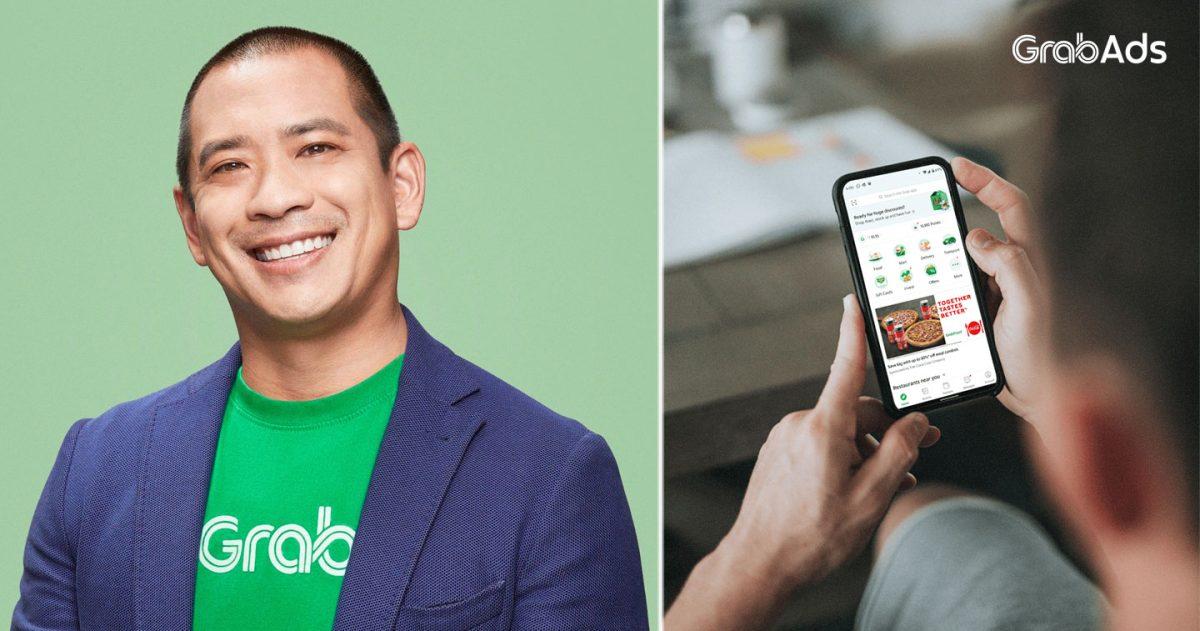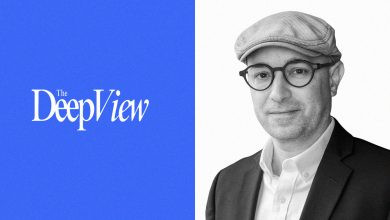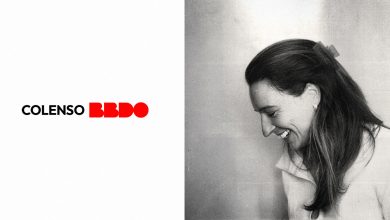MANILA, Philippines— The pandemic has cut mobility out of the picture for most of the population. But thanks to super apps like Grab, food delivery and grocery shopping can be light and easy.
In this adobo magazine feature, GrabAds Head of Regional Brand Engagement Dave Yang talks about how brands innovate on Grab and ultimately help in-app consumer journey.
Paint us a picture of the current landscape of brand engagement and how important convenience and speed is to consumers.
The pandemic is something that probably should have challenged us significantly. But if we look at our food delivery year on year, our GMV (Gross Merchandise Value) is up 58% and then if we look at GrabMart, it’s actually a 5x compared to Q4 of 2020. Now what’s really driving that is a specific consumer behavior. Due to the lockdown, aggregation services, and super apps like Grab have actually become a utility service to Filipinos.
If we take a look at it, 90% of Filipinos use home delivery now. And I think things like food and grocery delivery have also been accelerated. At the same time, even when we go back to normal and we’re starting to see signs of normalcy, likely, we’ll still be ordering food, and will likely be ordering groceries because we see the advantages of that utility based on the convenience of it.
What’s really interesting is the pressures of the pandemic has really forced us to transform the business and we’ve been humbled enough that we are able to do so in a manner that we’re able to deliver value for the consumers, the brands we work with, and of course, the platform overall.
What were the popular kind of adoption routes? How did you attract people and let them know that GrabMart was available?
The beauty of it is, once you’ve established a platform, as we had with Grab as a super app, we already have an opportunity to engage consumers. I think from the perspective of Grab, when we talk about engagement, we’re in a situation in which the engagement and the time spent on our platform ultimately leads to transactions. I think this is why brands are interested in advertising with us, because everything that happens on the platform is a transaction. What we’ve seen is that as we continue to iterate and launch new services on the platform, we’re seeing that more and more users are using two to three of the different services increasingly.
What were the needs from the brands and businesses that you were working with?
According to Visa, 52% of Filipinos shopped online through apps or websites for the very first time during the pandemic. So we definitely saw an uptick in e-com, quick commerce digital transaction. So that’s one. The second is we do have our pulse on the market and we did listen to consumers and observe what was needed.
Once again with lockdowns into play, there were certain physical barriers that were presented, that did not allow people to get access to groceries so GrabMart definitely seemed like a good opportunity. I think we’re able to work with FMCG type of brands and grocery brands, like Unilever, for example because we’re able to use our first party data to then ensure that we’re putting the right content—another word for ad—in front of a consumer.
The power of our first party data is we’re actually able to use it to make the ads or the content that we put in front of consumers contextual and then we start to cut down the path of resistance in terms of ad investment. The other way that I look at it is in terms of consumer time. None of us want to look at an advertisement but if it’s actually content that’s relevant to us, especially on a platform in which transactions are the reason that we’re there, then it’s actually very useful.
Cite a case study where GrabAds innovated the traditional product sampling.
Alaska milk recently launched a new flavor of evaporated milk products, specifically in the Philippines. I think what’s really interesting about this case study is it demonstrates a unique offline-online proposition around sampling of products. So if we think about right now, with the pandemic and the lockdown, sampling is really difficult. Perhaps back in the day, you’d be at SM Megamall, or you’d be at a grocery store, and they will hand you a packet and then you’re just kind of off in the wind.
Today, I would say consumers are probably a little bit reticent to maybe take a handout from a friendly person distributing samples, it just seems like a strange thing to do in the pandemic. So what we’ve innovated on is a sampling solution that really leverages everything that we have at Grab.
The first part of that is with Alaska milk, we were able to target 856,000 users across the Philippines on Grab and let them know that there was a new product. The second part of this is, we then made it available for distribution – and we can do this a number of ways. We can work with our merchant partners on Mart to distribute samples. In fact, we distributed 10,000 samples in a three month period.
What I think is really cool about that is if we look at the traditional way of sampling, if I give you a sample, you’re off and there’s no way informing you of an offer or a deal. I wouldn’t even be able to ask you if you like the product or not. What we do know is that four out of five Grab users in the Philippines are more likely to actually purchase a product after they sampling. So sampling is really important, especially with new products to get the ball rolling.
What we’ve been able to create and innovate on is a full funnel where we’re able to drive awareness, deliver the sample itself, and then engage the customer for future repuchases. So we’re really excited to see this continue to grow.
This isn’t sampling but what I think is a really innovative and amazing case study is with Knorr, the Unilever brand. So Knorr is obviously the spice that makes everything better, the flavor that gives everything more flavor. What they did was incredibly smart and it goes back to my point that great ads are contextual content, especially on a platform that’s about transactions. So Knorr essentially served ads and when you click on the ad, you’re taken into a recipe of sorts. If that recipe sounds good to you, you can simply click on it and it will auto populate and autofill your basket in Mart.
I think that innovation and creativity that we often see from Filipino marketers is really exciting to us at Grab, because it’s not just about how we innovate on the platform, but it’s how brands innovate on our platform.
Why is it important for brands to find new and innovative platforms, and ways to engage in order to catapult them into the right path?
As a marketer, you cannot continue to just rely on the base of knowledge you have, because consumers, and the power of consumerism always moves. So I think one of the biggest shifts, obviously, that we’re living with right now is the pandemic and I think it’s very clear, you want to shift where transactions are happening and that’s why I think we’ve been so successful in a very short period of time at GrabAds, because we are where the gravity is shifting.
We’re still in the pandemic so it’s a continuous shift and understanding that these behaviors are just here to stay, like grocery ordering, food delivery for example.
When we do go back to opening, I think it’s safe to imagine that there’ll be a rush for people to go out and be in the real world and be in malls again. And that’s where this Grab Rewards can come in because you can target them on a platform that is likely going to bring them to the place. Because at Grab, we bring products to people and we also bring people to products and places as well.
How can consumers maximize their experience on your platform?
As a consumer, you actually are looking for something, you are looking for beauty products, you are looking for a beverage. Brands understand that can leverage our first party data.
GrabAds is just a part of an overarching opportunity to serve communities and consumers and I believe that the part that we play with our first party data is we help to direct and inform a personalized shopping experience based on proxies that we’re getting.
I think in the case of GrabAds, it’s actually a helpful guide, to suggest, to inform, to make you aware, to assist you in getting the best deal possible and that’s where I think the power of our products comes into play for brands.
What is the future of brand engagement for GrabAds?
We want to leverage our first party data, and of course through a privacy-safe way, to ensure that we are putting the best content in front of consumers – and that benefits all parties. It benefits the brands that we partner with. Most importantly, it benefits the consumer so that’s a win win for everybody.
Two, we want to continue to leverage our unique ability to be able to drive traffic of offline to online, to offline, back to online.
Ultimately, we’re just excited to continue to ramp things up, and you will see quite a bit more from GrabAds over the next year. We’re just really excited to be in a position to serve the community and ensure that we have the best content on our platform in the form of ads to our brand partners.
About Dave Yang:
 Dave Yang is the Regional Head of Brand Engagement at GrabAds. Based in Singapore, Dave leads a regional cross-functional team to create value for GrabAds’ customers, working closely with them to design hyper-personalised experiences for consumers across Southeast Asia.
Dave Yang is the Regional Head of Brand Engagement at GrabAds. Based in Singapore, Dave leads a regional cross-functional team to create value for GrabAds’ customers, working closely with them to design hyper-personalised experiences for consumers across Southeast Asia.







